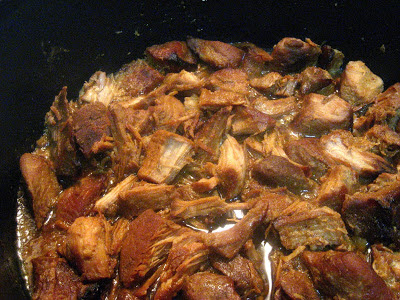Anyone who keeps track of food fads or reads the news regarding trends in New York City (or in the USA even) should know about Dominique Ansel's
Cronuts.
The cronut craze has literally swept the nation. Bakeries in big cities like LA, DC, and Chicago are taking note of the huge success of this new baked good and selling knock-off creations called doughssants, cray-nuts, and doissants.
So what are these things? They are hybrids:
half-doughnut, half-croissant. A flaky, deep-fried pastry filled with sweetened cream, rolled in sugar, and glazed. And apparently something about these creations has them in high demand because even though they are selling at $5 a pop, people have been lining up outside Dominique Ansel Bakery in Soho for up to 3 hours to wait for theirs. The cronuts are so popular that people start waiting around 5 or 6am and the bakery sells out each morning within a couple hours of opening, even though each customer is limited to two cronuts. Cronut popularity is such that people have started scalping theirs for $20-40!
Still on vacation and now happily settled into our new apartment just 20 minutes outside of Manhattan,
B. and I decided to give up some precious sleep one morning and see just how good these things could be. We woke up at 4:45am, took the train into the city and groggily got in line. We decided to do this on a weekday, just to make sure we weren't standing in line just to have them sell out before we got to try one. This ended up being a very good plan, because when we got in line, there were only about 20 people or so in front of us. The line quickly got longer though, and stretched around the corner and down the block as it got closer to opening time.
When the doors opened at 8am, Dominique Ansel himself came out and allowed a wave of people inside. Of course, as luck would have it,
B. and I were at the exact cut off point and so we had to wait outside. But then a girl from the bakery came out with a tray of fresh, hot madeleines. Each person in line was allowed to have one. It was so nice, especially after a long wait.
At last, we were allowed inside. The line moved quickly and efficiently, as the cronuts are pre-boxed and almost everyone knew exactly what they wanted. Because of the new limit of 2 cronuts per order,
B. and I split up so that he could order two and I could order two. I was afraid this might be a bit excessive, especially since that total order came to $21.78 (post-tax), but in the end I'm glad we got that many.
There was space at a table in front, so we sat down to eat ours right away.
B. saw how good they looked and declined my offer to split one, saying that he wanted his all to himself.
The first bite immediately showed the complex texture of the treat. The fried, sugar coated exterior gives ways to a pleasantly chewy interior, much like a yeasted doughnut, except that it has an airy quality to it. On the second bite, I got some of the filling -
vanilla crème and blackberry jam. The jam had some acid to it, which perfectly balanced the sweet and fat of the cronut. The glaze was very sweet (clearly the ingredients were mostly sugar and very little actual flavoring) and a bit of an overkill since there was already a sugar coating. The cronut is
very filling. You can definitely feel the calories from the butter of the dough and the fat from the frying. If it hadn't been for the very long wait, I don't think I would have been able to eat an entire one.
Overall, we both enjoyed our cronuts, but the price tag is a hefty one. I'd never pay more than about $2.50 for a croissant, and a doughnut needs to be
really good for me to consider it worth $3.50, so this cronut cost significantly more than I'd be willing to pay for its parents. The cronut also didn't have the flakiness I would expect from something that is supposed to be half-croissant.
Would I like to eat one again? Sure. Would I like to wait 3 hours in line and pay $5? No, thank you.
Dominique Ansel Bakery
189 Spring St (between Sullivan & Thompson)
New York, NY 10012
Tel: 212-219-2773
Hours: 8am to 7pm (Monday to Saturday)
9am to 7pm (Sunday)
Closest subway stops: Spring St (C-E) or Prince St (N-R-W)






















